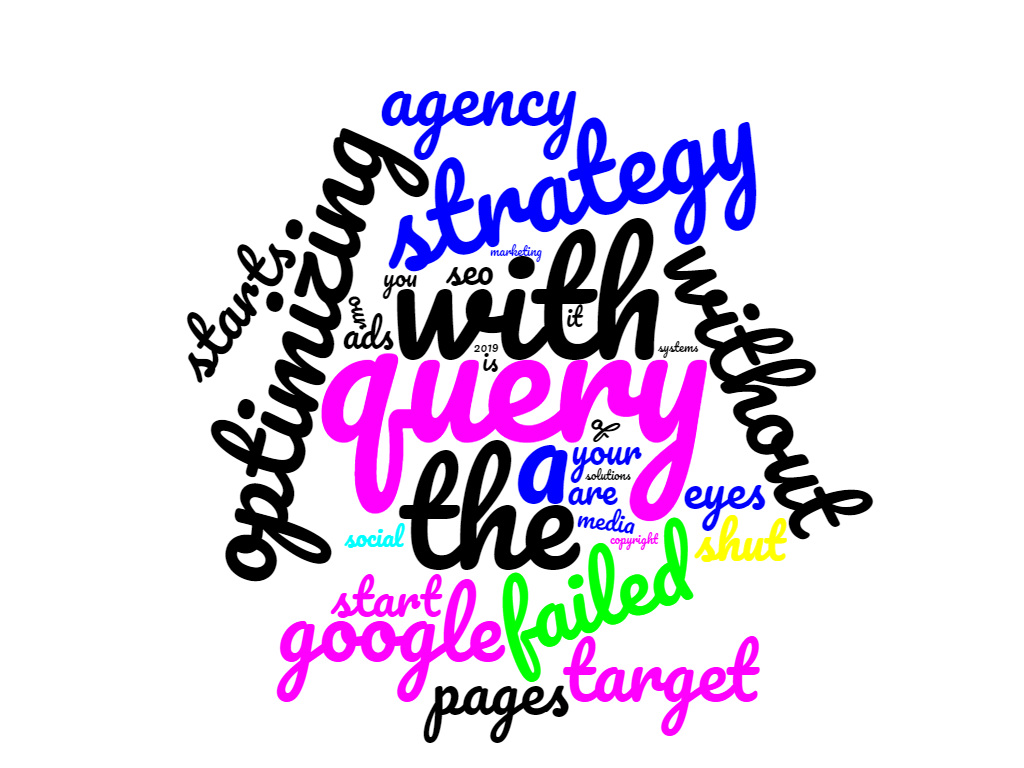The marketing needs of every business are unique but in digital marketing, there are four common pillars built on a foundation. In this article, we will explore the general concepts of the digital content strategy and discuss what to look for in the fit of these pillars to your business. The foundation of all pillars is your content and taken as a collection, content is the image you are painting in the minds of your market. Executives need to closely direct and oversee any Content Strategy Agency or internal staff used in developing supporting collateral materials.
How to Optimize PPC – aka Paid Traffic
While this goes by many generic and brand names, PPC is simply paid traffic. It is often the first tactic brought to the account because it’s the quickest to deliver. The time from launch to the first click is minutes not months. PPC is a big field of study and to understand it we need to slice it down into fine sections. Within our blog you will find hundreds of articles on how to tune PPC accounts – it is what we do.
The secret to optimizing PPC is finding the optimal balance between the manageable variables with bid and budget being big ones. There are lots of other settings and don’t forget ad and page content. Increase the bid and you get more traffic driving up the volume of leads and the CPA. Increase your budget and your volume goes up and your checkbook balance goes down. The key is to know your target for cost and volume and to constantly tune your settings.
PPC’s first split is between Search and Display. When people think about search engines the keyword-based search is what they think of. This is a process of matching keywords both positive and negative to present your ad on the SERP (Search Engine Results Page). Controls over PPC Search are extensive and include keywords, geographic location, devices, audiences, demographics, time, and others. Simply put, Search PPC are people searching for your product or service.
PPC Display is advertising that people run into rather than search for. Commonly, these ads are placed on web pages that match the keywords targeted by the advertiser. This is one of several targeting options available. The Google Display Network (GDN) is estimated to have almost 2 million websites that your ads could appear on. Some of these are high profile credible sites with strong reputations that could be huge for your brand. However, the GDN also has some very marginal sites and in there lies the problem. It takes a significant effort to make sure that your ads appear on the good sites but not on other less credible websites. This creates a worldwide game of digital whack-a-mole as you try to exclude the marginal sites while competing for the good ones. Targeting in GDN is also extensive with many of the same controls of keywords, geographic location, devices, audiences, topics, time, and others.
How to Optimize SEO – aka Earned Traffic
SEO (Search Engine Optimization) is the oldest of the pillars. When we first started working in Digital Marketing in 1994, SEO was the only pillar available. At its core, SEO is simple to understand but as they say “the devil is in the details” and there are lots of details. While there are huge debates in the details, the general concepts are well known and widely accepted.
Regularly Published Great Content Consistently Wins Every time
Great content wins the SEO game every time while games and tricks have very short life spans. SEO breaks down into four manageable major categories:
-
- Word Weight
- Page Rank
- Authority
- Click Through Rate
Word Weight is what most people think about when they talk about SEO but it is only one of the factors. The word weight comes from the occurrence (raw total) and density (percentage of total words) and the position it was found in. The hierarchy is:
- Title (20)
- Meta Description (10)
- Headings
- H1 (9)
- H2 (7)
- H3-H6 (5)
- Anchor text (4)
- Lists (3)
- Body Text (1)
Nobody knows exactly how much weight is given to each category but I am sharing my formula numbers which seem to give results very similar to a Google Search. I used the number next to each item as the weight. So a word occurring in a title gets 20 points with the same word in body text getting 1 point. The density is used to calculate a standard weight so comparisons from site to site can be performed. With a standard weight, the total of all sites adds to the same number and for my calculations, I use 1,000. We sum the word weight then divide 1,000 by that. Then recalculate the weight using that standard.

The real math is fancier than this example but if you understand this and multiply the standard weight by the PageRank you get very close to the internal workings of Google. Outside this formula is lots of protection to stop this from being tricked by ethically challenged SEO experts.
Here is what this data looks like in a real-world example:

This is a visualization of what your page is actually optimized for. It is not unusual to see common words that have no meaningful value to your SEO strategy exist in high-value positions. In this example, the goal is to be about query optimization strategy but the words, a, with, the, are wasting SEO juice. Finding pages that are optimized for words of no business value is common and you would be amazed how many pages we find optimized for the word “Home”.
Authority is the next factor and it has many potential items that might be considered. Google has been working on this for many years and there are some well-known items. Freshness is a factor that will give you a higher rank but it will decay quickly depending on the type of content that Google believes the page falls into. An example of content type would be editorial versus sales copy. Separating these is not difficult and we can tell you with a high degree of confidence that Google ranks editorial higher than sales copy. Google is always trying to produce the best possible SERP (Search Engine Results Page) and they want to answer the users query. In most cases, they are seeking editorial information.
CTR (Click Through Rate) is a factor and it is huge!!! I have been working in SEO since 1994 and my gut tells me that CTR could be as much as 65% of the total page score. The CTR is how Google converts impressions into money so it stands to reason that they would highly value this on the organic side as well as the paid. You have control of your page titles and meta tag descriptions which can affect your CTR. Titles and descriptions are what is shown in the SERP. What you put in there has a strong influence over the CTR. Google’s official position is that CTR is not used in the SEO Score but many years of experience tells me otherwise.
How to Optimize Email
Optimizing Email is as simple as these three steps:
- Write great original content
- Send to a list that opted-in and cares about your content
- Send on a regular and reasonable frequency
Do these three simple steps and your email will be a home run and you will be blessed with wonderful engaged traffic.
Email is one of the most powerful tools on your marketing tool belt but you need to have content and a list to use it. Building a list takes time to get people to opt-in and you have to offer them something of value for their email address. You can rent lists but you need to do your homework to ensure you do not get branded as a spammer. Email is wonderful because the more you use it, the better it gets. There is a cost that is overlooked, though. If you are actively building your list as you should be, then you should know what it costs to get a new subscription. You will inevitably lose some subscribers and that, multiplied by the cost to replace that name, is the cost of using that list.
Email lists are a conversational tool and lists tend to get better with time because you are increasing your marketing frequency. As everyone knows, marketing campaigns are managed by reach and frequency. In an email, the first open is your reach and the second is your frequency. Increasing frequency can be both good and bad. It’s good in that it raises the awareness of your brand but bad if it is overdone. Too frequent, and you are a pest, too low, and you are forgotten.
How to Optimize Social Media
Social Media is the new kid on the block and it has been disruptive. Many think about only the earned traffic from social media but there is also paid advertising in social networks such as Facebook or LinkedIn. Social media is a change in the communication model for most businesses. It is a conversation tool not a place to lecture and the business has to adjust for that. I like to stress the word social in social media because if your profile is all business all the time, your audience will ignore your messaging.
Social media is a platform in which you can talk about your business. It is an outlet that allows you to connect with your customers, increase awareness of your brand, and if used correctly, engage with those potential customers. The goal of social media is to turn customers into a volunteer marketing team. When your fan base engages and share your posts, their friends, and their like audience see the engagement; which broadens your reach and frequency. However, there is a trick to posting the right content.
- Communicate Authority – Customers are becoming savvier in how they research a business. Before making a decision, they do a quick search to not only browse your website, but also your social media presence. Will they find an empty storefront or a rich source of relevant information? Showing what your business offers, values, and finds humorous, helps establish confidence and trust that you are the expert in your industry.
- Be Authentic – Your audience can spot inauthenticity from a mile away. People connect most with content that is real. Be honest and real about your product, service, and yourself when you can. Go behind the scenes and humanize your business.
- Show your brand personality – Be personable, witty, and humorous. People love jokes, witty sarcasm, and a little self-deprecating humor is fun once in a while. Use this wisely, and your fans/followers will share your content and you will reap the long-term benefits of your volunteer marketing team.
- Provide Resources – It is a complete disservice to your business to run a social media plan without having someone monitoring and responding to feedback. Social media platforms have successfully broken down barriers between companies and customers. Many people turn to social media business pages to ask questions or look for solutions to their problems. Responding as quickly as possible to questions and concerns, in a positive and helpful manner, helps customers feel they’re being heard. However, do not dismiss the power of an old fashioned phone call. Make sure your business phone number is listed in your social media platforms, with a ‘click to call now’ feature.
Take the time to plan and build an authentic yet personable social media plan with the above points in mind. Remember your posts should align with your company’s brand image and values. Your social media presence is ingrained as your company’s reputation. So make sure it’s great!
Putting a bow on this
Start with a foundation of great content and use these pillars, also known as channels, to dominate your market. This will not be an easy mission and your competitors will fight you at every step but the rewards are worth it. Keep your head in the long game and constantly push the quality of your content.
If you are looking for a Content Strategy Agency to assist or supplement your internal staff we would love to have that conversation.



